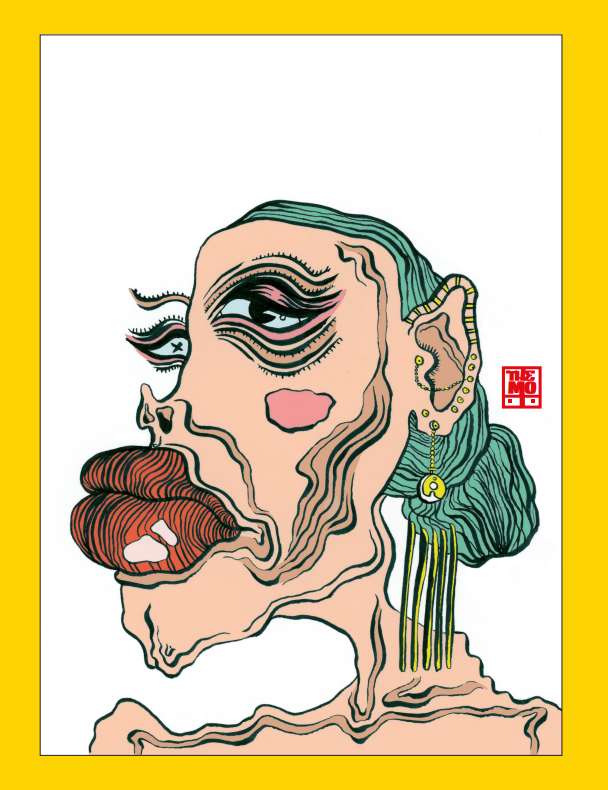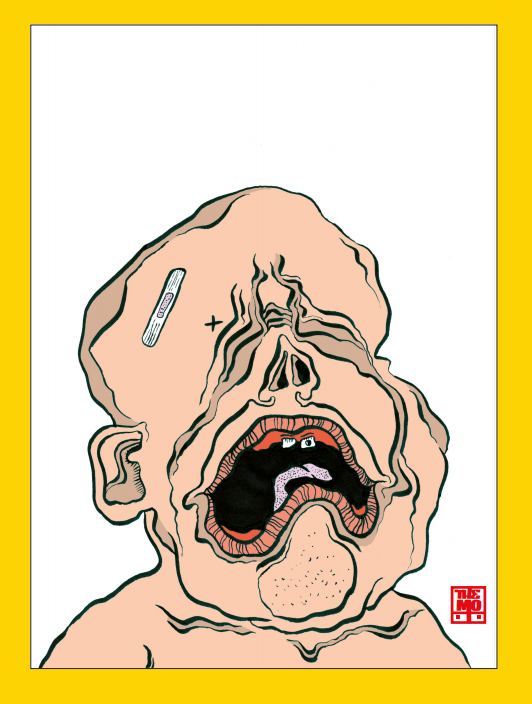Luna Silvestri You are one of eight artists featured in Sign of The Times, our first digital exhibition. Who is The MO?
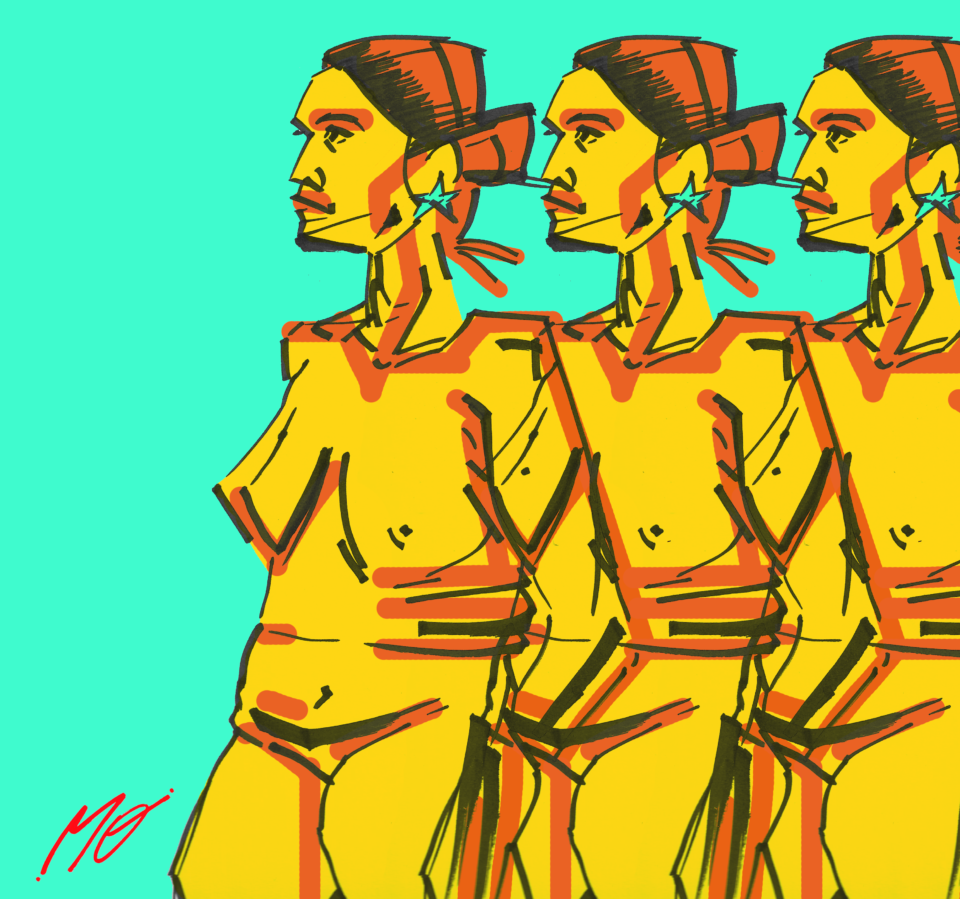
The MO The MO is not directly me. It’s like a creative entity that enables me to keep a distance from my personal self, especially when I post online. The MO takes control of my hand, fuels it with confidence and ink, and drives it freely around whatever the underlying support is. The name in itself dates back to highschool: I remember watching a Youtube video with a friend, with a lamb that instead of saying ‘mhe’, went like ‘mo’. Simple as that. Now, my artistic signature is The MO.

Curator Luna Silvestri 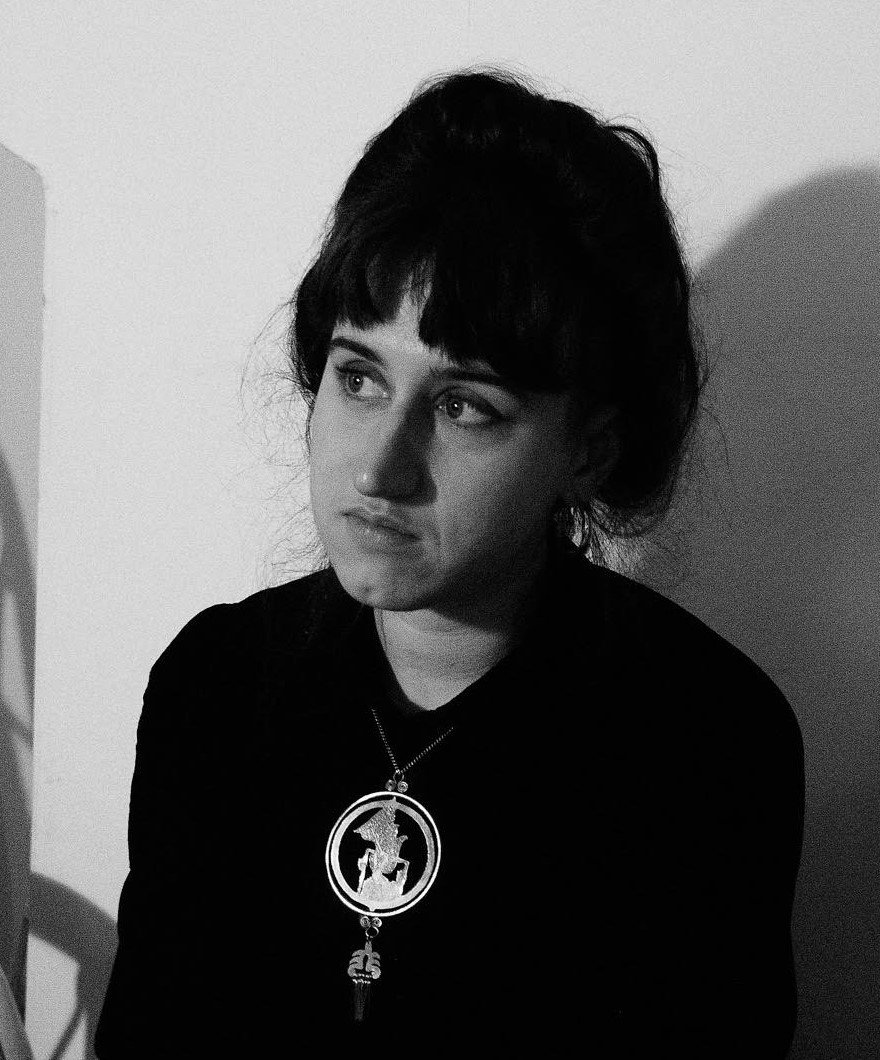
Artist The MO
LS Your dedication extends from digital prints to clothing creations, Japanese calligraphy designs to photography, painting to tattoo making. So what is and isn’t an ‘artist’ for you ?
The MO It may sound cheesy, but I truly believe every child is born with the spark of creativity. Have you ever seen children draw for instance? They are so confident in what they do, and rarely question what they create. To me, an artist is anyone who has kept that confidence in expressing their imagination through adulthood.
There is no hierarchy of subjects or mediums. Anyone who expresses themselves on any support, from manual to digital, is a creative person. Maybe that’s a bit optimistic and naïve, but I don’t take the label ‘artist’ too seriously. My point is: people get to decide whether they’re labelling themselves as an ‘artist’ or not. That being said, I’ve been reflecting on whether AI can be considered as an ‘artist’. Although it did require technical creativity to code it by real human beings, what it ultimately creates isn’t controlled or driven by anyone anymore.
LS Maybe the wording ‘artist’ is an outdated term for today’s artistic scene then.
The MO It is harder and harder these days to label someone as ‘just’ an artist. Creative people increasingly depend on social media visibility, on e-shopping sales (etsy, ebay, redbubble), that you’re never really just an artist but also a social media coordinator, a website designer, even a post officer sometimes. There’s so much competition and the ratio supply/demand is slowly equaling itself, that you have to be really lucky to live just by your art.
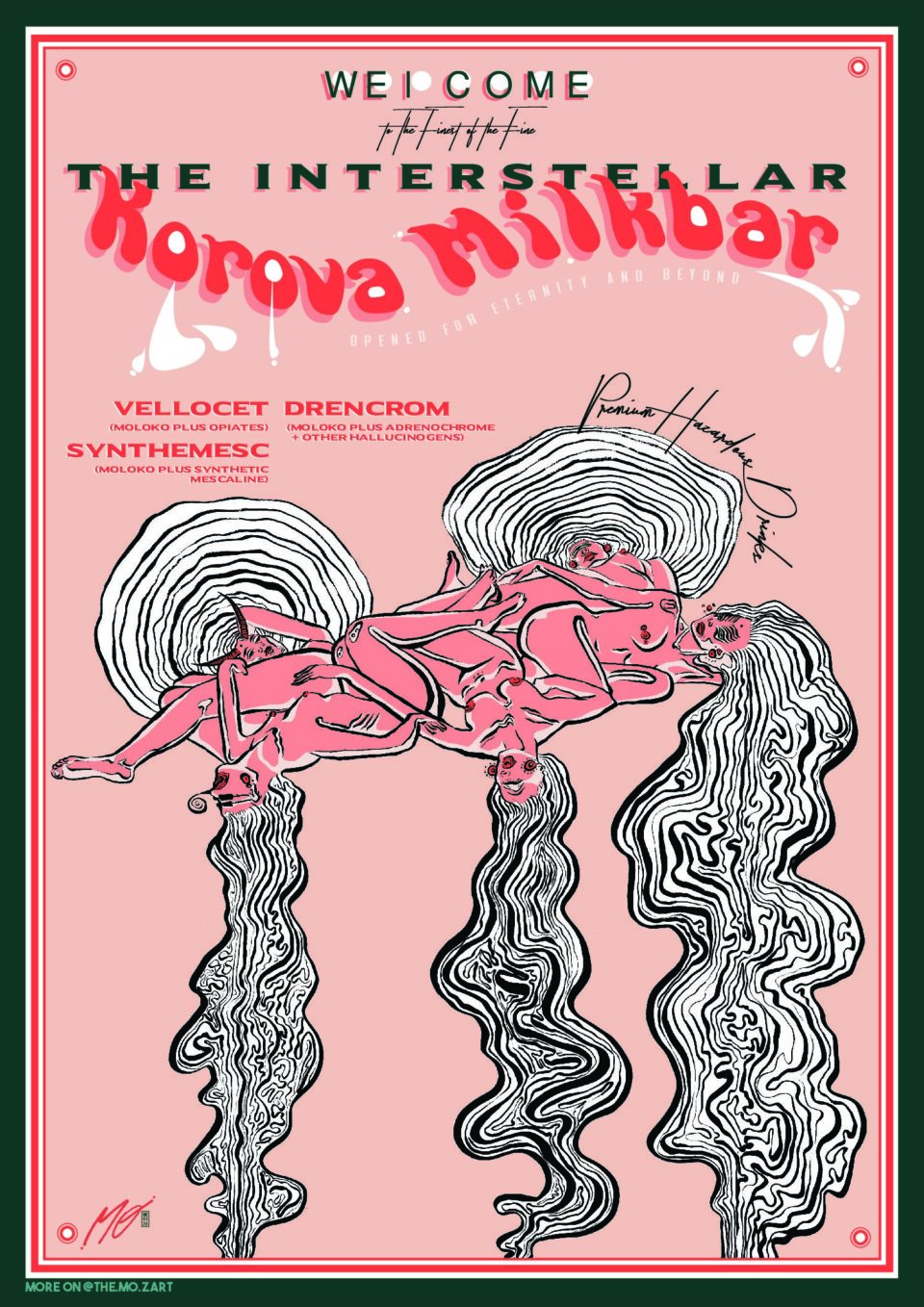
LS What is your relationship with the works you make? Is there a.ny reason.s that drive.s your artistic process?
The MO I don’t think of the finished product. I focus on the act of creation in itself. I almost exclusively create without preparatory sketches or even sometimes an idea at all. I consider my relationship with art as a therapy, and the medium being the psychologist bearing my personal experiences. Although it does liberate me a lot to create, I rarely value the finished work at all, since I don’t really see a point in it. If I keep the finished works or post them on Instagram, it’s for people to get to know me without me having to explain the sometimes weird or gory stuff I notice in life.
LS I would say that you are mainly dedicated to digital art and digital prints. What are the main attributes of this medium compared to, say, sketching, drawing and painting?
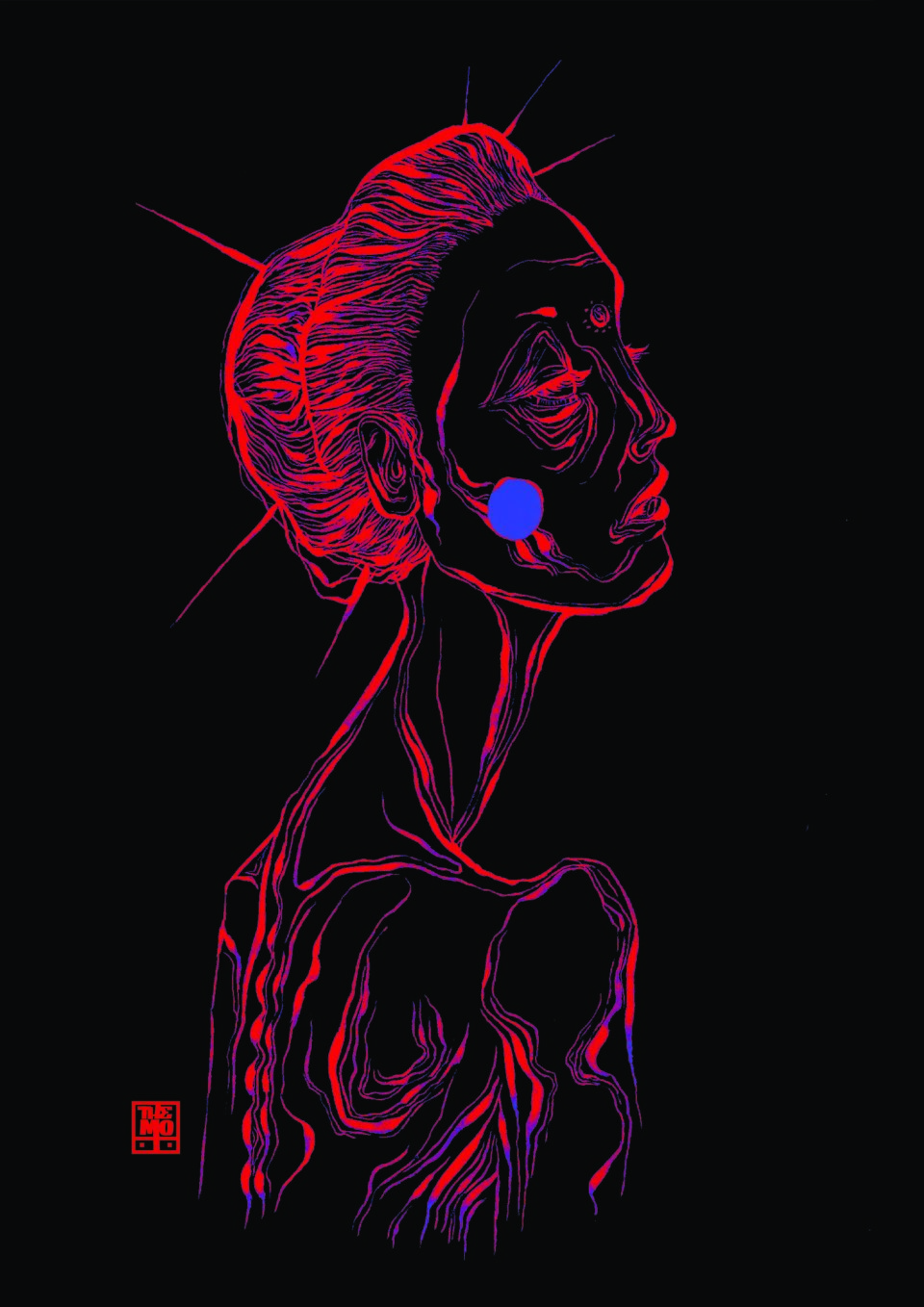
The MO Actually my prints come from a hybrid process. I firstly draw, scan the drawing, and from there, I bring my digital palette into play. Digital art really works for me as I enjoy the technical, almost mathematical, side of organising the layout of my works as much as the unpredictable act of creation itself. The unspoken language of typography and the power/politics of colour combinations is what keeps me up at night. Without all this digitalisation, my works would be way less experimental, colourful and diverse. The hybridity gives me a lot of freedom, yet I sort of get the best and the worst out of it: the ever ending possibilities of digital art within which you sometimes lose yourself in, combined with the intimate yet time-consuming and zero-error contingencies of traditional art-making.
LS Last year you were selected for Visual Sound, an exhibition that has guided the interconnections between fine arts and music. This year we are proud to host you again, in Sign of the Times, but instead of showing digital art, you will be the protagonist of a new photographic series. Can you tell us a little about your Prey of Spaces project? Why the camera this time?
The MO I really wanted to interact with the immediate environment, and to me, nothing does it better than photography. As opposed to other mediums, photography is more honest, because it’s raw, I don’t get to process the work after that: what you see is what I saw. As for Prey of Spaces, I knew I wanted to do a photographic series on the interaction with my everyday spaces, and parallel to this, I also take portraits of my friends with paint on them, it makes them more confident as it’s not completely ‘them’. A bit like The MO.
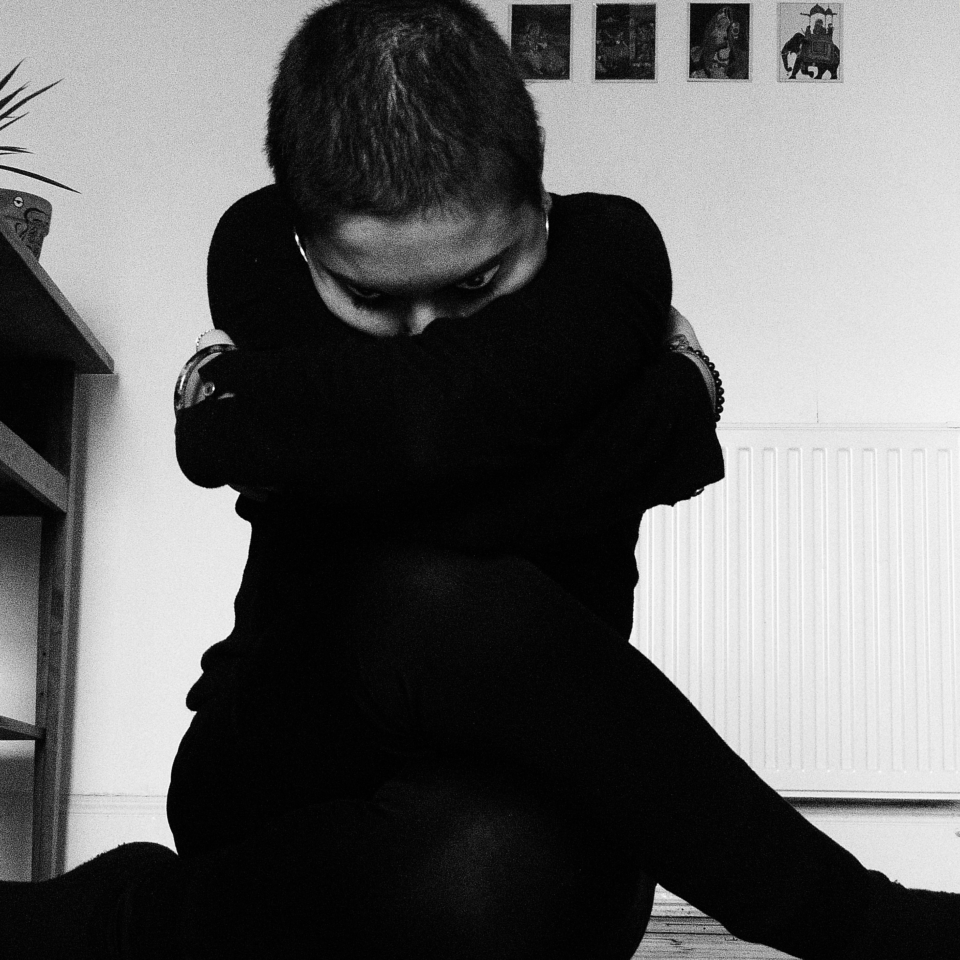
Prey of Spaces [Constriction], 2020 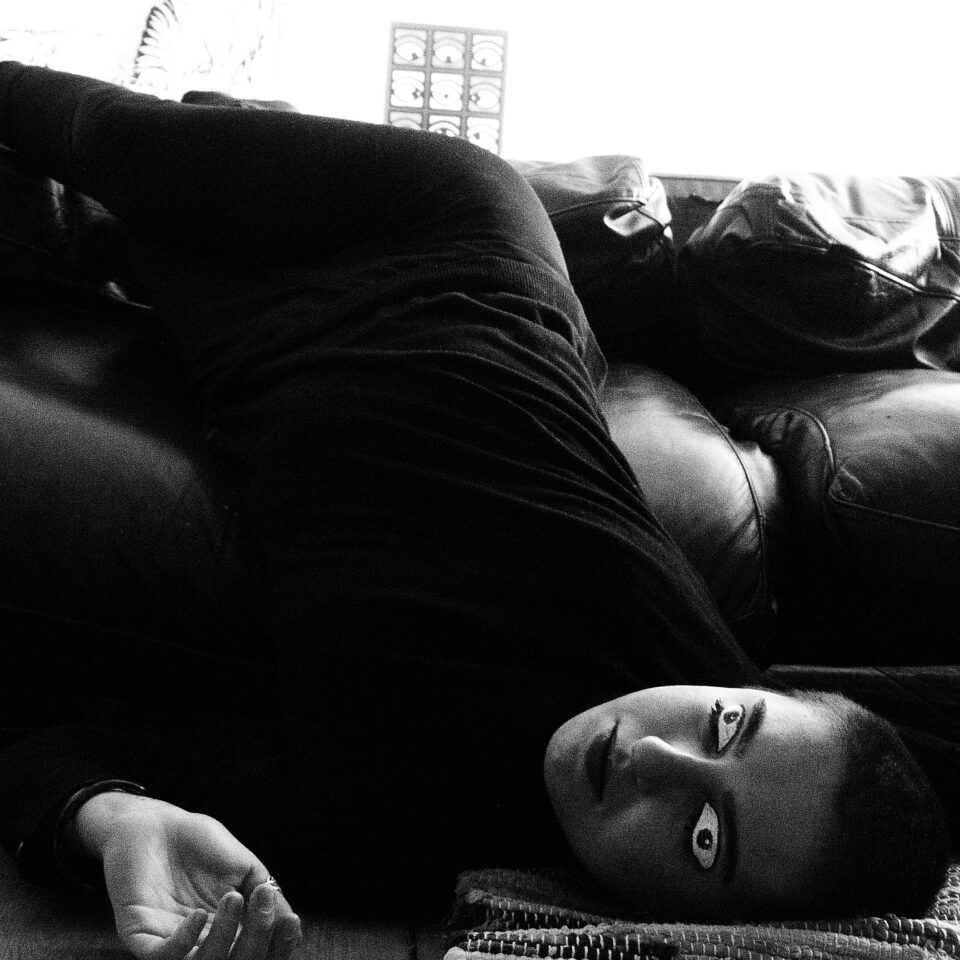
Prey of Spaces [Hunted], 2020
LS Above all, behind the project, there is the life experience of The MO, a youngster in Glasgow. How are you living this period of closure, and how has this been reflected on your work?
The MO Prey of Spaces deals with our space-compressed lives at the household level, and how, by staying constantly indoors, we are prone to a hyper-sensible, hyper-awareness of our spaces. My sleeping pattern was really affected with the lockdowns, as I discovered the great joys of insomnia. The pictures are in a square format to emphasise this compression, and in a contrasted black & white for a sense of disconnection with reality and life outdoors. The painted eyes testify for this disrupted sleep pattern.

LS This is your and our first digital exhibition. What is your position on the adaptation of cultural institutions to this immediate digitization of times? Do you see this change as an advantage for artists dedicated to digital art and / or photography?
The MO I believe the digital transition is a good thing, because as I said, it increases the possibilities for creation. However, digital art, and perhaps even digital exhibits, create a distance between you and the art. The materiality of the object and the physical interaction is omitted. Also another problem I see in this digitization is that we are not aware of the techniques and approaches used behind the finished digital work, so we limit ourselves to an external judgment. Perhaps we can think of the unseen artistic labour of digitization and the commodity fetish: when you take an object as it is, without deconstructing the entire creation process.
LS In this interview we have scrolled through works of art from different periods of your life. There are changes in styles, mediums, tones and moods. Do you go back to your previous artworks as time passes? What can you learn from the different approaches you have used over the years?
The MO I don’t think I have a style, because I mix different styles. I use Japanese calligraphy to create bold black lines, then the digital palette to get colorful monochromes and so on. I mainly see an evolution of the subjects within my works rather than the style. Now I enjoy drawing disturbing portraits, because like they say, “art should unsettle the pleased and please the unsettled”. On that note, photographic portraits inspire me a lot, especially Humans of New York, due to the endless anecdotes you can learn from random people. I also use old school cartoons and pop culture as references to my art: I turn them into something weird and make them unrecognizable. Again, unsettling.
LS Any project ahead?
The MO I’d like to expand the Suburban Family zine to include portraits and stories of neighbours, unofficial lovers and stray dogs, so that’ll keep me busy for a bit. I also want to work on some eco-friendly merche: I’m planning on doing linocut designs to recycle old tote bags, something everyone has at home. I also need to figure out what to do with my collection of train tickets.
Learn more about The MO’s contribution to the Sign of the Times exhibition in RelevoArts, and if interested, buy a print of her Prey of Spaces series. Follow and support its artistic projects in @the.mo.zart and @relevoarts.
